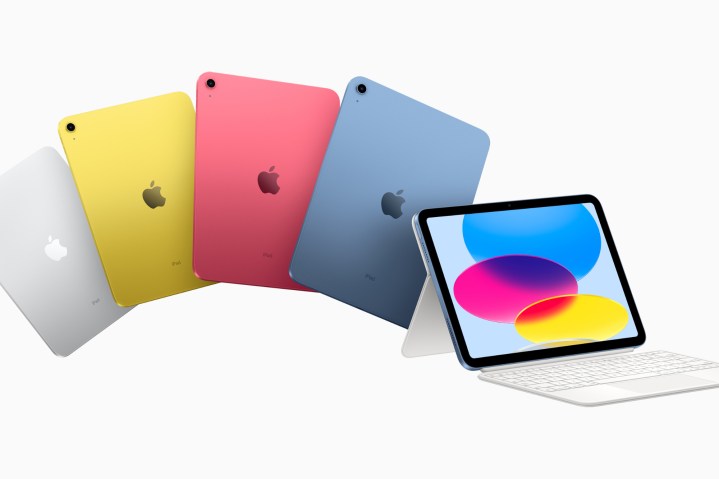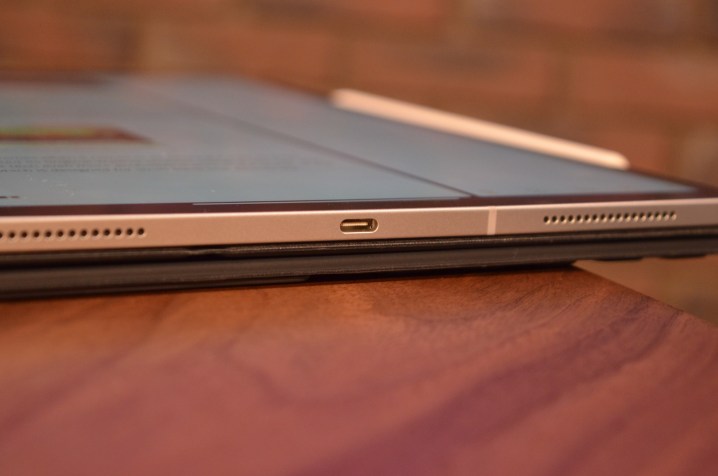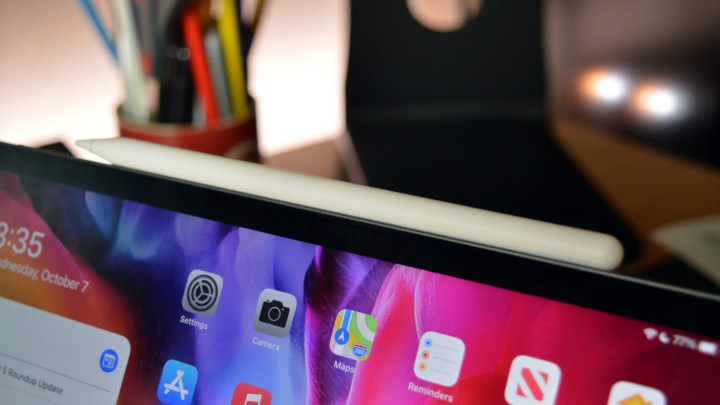This week, Apple unveiled a pair of new iPads. While the much-anticipated M2-powered iPad Pro is the highlight of the season, it’s actually Apple’s entry-level 10th-gen iPad that’s a much bigger — and weirder — upgrade for the company’s tablet lineup.
After all, the M2 iPad Pro isn’t much of a surprise; it’s mostly the same iPad Pro we’ve known and loved for the past four years, supercharged with a faster CPU and expanded Wi-Fi 6E support.

On the other hand, the iPad (2022) is a whole new ballgame. This new iPad leaves the past decade of traditional iPad designs completely behind, adopting the more modern design introduced to the iPad Pro in 2018 and the iPad Air in 2020. While its measurements are slightly different, it looks close enough to its more premium siblings to fit properly into the lineup for the first time.
It also unifies Apple’s iPad family in other ways, but sadly, the changes it brings aren’t quite as universal as you’d expect. In fact, it’s arguably near the top of the list of the oddest products that Apple has ever released.
Hello, USB-C
Perhaps the most important positive note for the new 10th-generation iPad is the addition of USB-C, marking the first time in four years that Apple’s entire iPad family has used a common connector.
Apple first brought USB-C to the 2018 iPad Pro. However, while Apple put a positive spin on it, the underlying implication is that it was moving away from its beloved Lightning connector as a necessary compromise. It was to ensure that the new iPad Pro would work with the kind of accessories a professional audience needs, such as higher-end displays and cameras.

Meanwhile, the rest of the world continued its trek toward USB-C, and Apple began to embrace the new connector in its mid-tier iPad lineup seriously; first, the 2020 iPad Air, followed by the sixth-generation iPad mini in 2021.
This left the entry-level iPad as the only Apple tablet still to use the Lightning connector. That didn’t seem like such a serious problem; since the ninth-generation iPad, released in 2021, still had the traditional design, with large bezels and a front-and-center home button, the Lightning port fit right in.
In what’s perhaps the biggest sign of things to come, the standard iPad has gained the comprehensive redesign of its siblings and adopted the USB-C port in the process. This makes the iPhone the only mainstream Apple device that still uses the Lightning port, but there’s a good chance that will also end with this year’s iPhone 14 lineup.
Lightning lives on in infamy
Sadly, a decade of Apple devices with Lightning ports has created a problem. A plethora of accessories — including many of Apple’s own — still use the proprietary port.
That includes many iPhone and iPad accessories, from the AirPods to the AirPods Max. Apple made some even stranger decisions for its Lightning port over the years, adding it as the standard charging support for most Mac peripherals, including wireless keyboards, mice, and trackpads.
In fact, it may be the height of irony that Apple’s Magic Keyboard for iPad features a USB-C connector, while Apple’s latest Magic Keyboard for the iMac still charges with a Lightning connector.
So, with that in mind, it probably shouldn’t come as a big surprise that Apple has done a similarly silly thing with its latest 10th-generation iPad.
Enter the Apple Pencil
When Apple unveiled the new flat-edged iPad Pro four years ago, it used the opportunity to debut a much-improved second-generation Apple Pencil. Although the first-generation Apple Pencil released alongside the original 2015 iPad Pro charged via Lightning, the new version attaches to a magnetic connector on the long edge of the iPad Pro to charge wirelessly.

It was an impressive new design since it lets iPad Pro owners keep their stylus handy when they aren’t using it while ensuring that it’s always charged up and ready to go. That was a stark contrast to the original Apple Pencil, which had to either be plugged into a separate charger — using a small and easily-lost charging adapter — or very awkwardly stuck into the Lightning port on the bottom of the iPad.
When the 2020 iPad Air and 2021 iPad mini adopted the modern iPad Pro design, they also gained compatibility with the new second-generation Apple Pencil — wireless charging and all. So, now that the 2022 iPad has been similarly redesigned, you’d expect it to follow suit, right?
Sadly, that’s not what’s happened. Instead, for whatever incomprehensible reason, Apple has chosen to limit the new entry-level iPad to only the original, first-generation Apple Pencil. In the process, it’s also made a bad design even worse.

Having an Apple Pencil protruding from the bottom of an iPad has always been a strange design choice. Granted, Apple intended this to be used chiefly for quick top-ups, but many folks have found it easier to charge their Apple Pencil this way normally, especially considering how easy it is to lose the small dongle needed to plug it into a standard Lightning cable.
Now, with the switch to USB-C, Apple is giving us another dongle to deal with. Since the first-generation Apple Pencil still uses a Lightning connector, the only way to plug it into the bottom of the new iPad is to use a new “USB-C to Apple Pencil Adapter.”
This is effectively a USB-C to Lightning adapter, but Apple is branding it specifically for the Apple Pencil because it’s designed for that relatively narrow purpose. Much like the female-to-female Apple Pencil Lightning charging dongle, this new USB-C to Apple Pencil Adapter features a female Lightning port on one end to attach to the Apple Pencil and another female USB-C port on the other end for connecting the USB-C cable that comes with your iPad.

In that regard, one could argue it’s a slight improvement over the original Apple Pencil design, as you won’t need to leave the stylus sticking out the bottom of your iPad. Instead, you’ll attach it using a standard USB-C-to-USB-C cable. But since you’ll need to keep both the dongle and the USB-C cable handy, it won’t be nearly as convenient as plugging it in directly. Not only is there no way to store the Apple Pencil on the 2022 iPad, but you now have to keep a tiny dongle with you too.
And there’s another catch here. While Apple has just begun including the USB-C to Apple Pencil Adapter in the box with the first-generation Apple Pencil, it’s not doing so with the 10th-generation iPad. That’s understandable since not every new iPad buyer will opt for an Apple Pencil, but it’s something Apple Pencil owners will need to consider when upgrading to the new iPad.
What we’re ultimately left doing is scratching our heads and wondering, “why?” The 2022 iPad is such a major overhaul in so many regards compared to its predecessor. Apple could have gone all the way with 2nd gen Apple Pencil support to bring easy storage and convenient charging. Instead, what we have is a messy, confusing, and clunky charging system that will (rightfully) be dunked on for a while to come.



